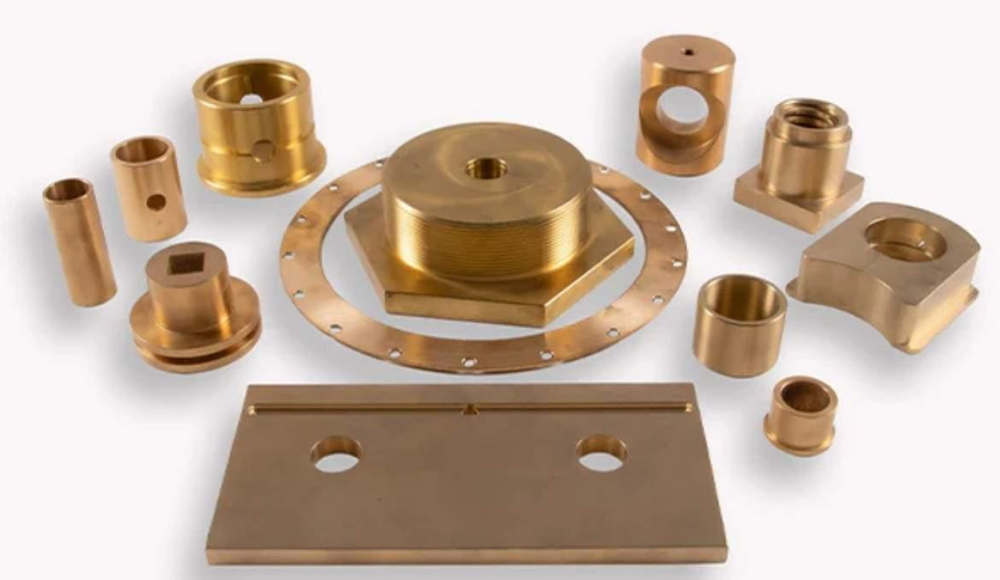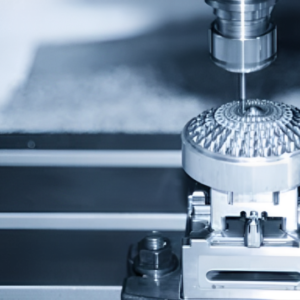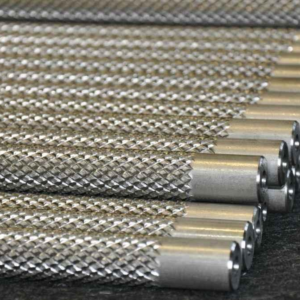Bronze alloy entails incredible performance. These are frequently used in door handles and medals, but their applications do not end here. Moreover, bronze is used in engine components, tools, and pumps. In addition, it is vitally employed in ornamental ship bells and fountains.
Understanding Bronze
Bronze metal is usually found in a reddish-brown color belonging to the “red metal” group. It contains 88% copper and 12% tin; it is relatively pliable and has many industrial uses. Additionally, the alloy is harder than pure copper, making the manufacturing processes easier. Low metal-to-metal contact improves its applicability in different industries. Sometimes, ingredients such as phosphorus or zinc enhance bronze characteristics. Casting means the melting of bronze, the addition of other materials and then cooling in core molds.
Types of Bronze Metal
Bronze encompasses around 50 distinct alloy types. For brevity, here are five common varieties in manufacturing:
| Bronze Type | Composition (Additional Elements) |
| Aluminum Bronze | 6–12% aluminum |
| Nickel Aluminum Bronze | 6–13% aluminum, up to 7% iron, 7% nickel |
| Silicon Bronze | Up to 6% silicon |
| Phosphor Bronze | Up to 11% tin, 0.35% phosphorus |
| Manganese Bronze | Up to 3% manganese |
Physical Properties of Bronze
Below are the key physical properties of bronze:
| Property | Description |
| Density (g/cc) | 5.60 – 9.30 |
| Color | Reddish-brown metallic |
| Melting Point (°C) | 315 – 1180 |
| Boiling Point (°C) | 1400 |
| Thermal Conductivity (W/m-K) | 1.01 – 208 |
Chemical Properties of Bronze
Bronze exhibits several important chemical characteristics:
| Property | Description |
| Corrosion Resistance | Good |
| Electrical Conductivity | Good |
| Oxidation Products | Copper oxide, carbonate |
| Magnetic | No |
| Malleability | Good |
| Ductility | High |
Common Bronze Alloys
The common bronze alloys are discussed below:
Aluminum bronze
Aluminum bronze contains aluminum around 9 to 14%. It has high tensile, yield, abrasion resistance, and mechanical characteristics. Aluminum bronze is optimum for marine industries because it is resistant to saltwater, and alkalies. Products include propellers, valves, and numerous other ship parts. It also fits for gears and bearings. Strength is similar to 50-55 HRC of medium carbon steel.
Some general examples of aluminum bronze include:
- C95400 (Aluminum Bronze)
- C95500 (Leaded Aluminum Bronze)
- C95800 (High Strength Aluminum Bronze)
- C95900 (Aluminum Bronze with Nickel)
Nickel Aluminum Bronze
Nickel aluminum features properties of nickel and aluminum. This alloy offers excellent corrosion performance in distinct environments. However, the pitting resistance is higher than that of the 300 series of stainless steel. Besides, it’s well-suited for marine and aerospace applications. The flexibility of nickel Ni-Al bronze is a major strength, particularly in welding.
Some general examples of nickel aluminum bronze include:
- C95400 (Nickel Aluminum Bronze)
- C95500 (Leaded Nickel Aluminum Bronze)
- C95800 (High Strength Nickel Aluminum Bronze)
- C95900 (Nickel Aluminum Bronze with Manganese)
Tin Bronze
Tin bronze is an ancient bronze alloy, usually characterized by fairly good casting and anti-corrosive characteristics. It has tin up to 12% hence used for gears and bearings. However, adding Tin Bronze to the machining project can raise the total material cost to be used in the fabrication of electronic products.
Some general examples of tin bronze include:
- C90200 (Tin Bronze)
- C90300 (Leaded Tin Bronze)
- C90500 (High Tin Bronze)
- C90700 (Aluminum-Tin Bronze)
Manganese Bronze
Manganese bronze is highly resistant to seawater corrosion, with ultimate tensile strength reaching 110,000 PSI. Usual uses are in the bearings, gears, and propellers used in marine vessels.
Some general examples of manganese bronze include:
- C86300 (Hi Tensile)
- C86400 (Leaded Manganese)
- C86500 (Low Tensile)
- C86200 (Med Tensile)
Bearing Bronze
High-lead tin bronzes are employed in bearings and bushings. The above-mentioned alloys are relatively cheap and efficient in terms of functionality. LCR is connected to the tin content. Lead distribution improves strength, lubricity, and conformability. Bearing bronze can operate at 450°F / 230°C. Its load capacity is about 4,000 PSI.
Some general examples of bearing bronze include:
- C93200 (Tin Bronze)
- C93700 (Leaded Tin Bronze)
- C94300 (Aluminum Bronze)
- C90500 (High Tin Bronze)
Bronze vs. Brass: Key Differences
Bronze and brass are mainly distinguished based on their constitution and properties. Both of them are copper alloys and are not easily corroded. However, bronze develops an oxide layer on its surface as it ages. On the other hand, it is known that brass has a characteristic of tarnishing slowly.
Brass is an alloy containing copper, zinc, and some other ingredients. These aspects determine the colour of this type of metal which can be a shiny gold or silver. Brass can be hammered into shape more easily than bronze, therefore it is more ductile. This property makes brass to be strong enough to be hammered and rolled without being broken.
Manufacturing Process of Bronze
Bronze has been important in developing tools and weapons for centuries. The process of production of the material is complex yet simple. This rigid alloy is prepared by heating tin and pure copper once they reach their melting point. The mixed gases must then be cooled and refined and the molten mixture has to be poured into clay molds and left to cool. Below are key manufacturing processes related to bronze:
Bronze Machinability
The machining of bearing bronze can produce good outcomes if done effectively. When machining projects, the use of coolant or lubricant improves the surface quality of the finished product. Because although it has great strength the risk should be carefully taken during operations. For example, lower speeds are advised during reaming because of “grabbing”.
Bronze Corrosion Resistance
Bronze has an incredible level of corrosion, and it can be used in conditions where other metals cannot survive, such as in salt water. It has a unique finish that can either be polished to a sheen or retained to produce a unique, mildly rust-like appearance.
Bronze Annealing
Bronze is not easy to anneal and stress relieve. So, bronze annealing must be done carefully through heating. It is crucial to sustain the temperature for one hour per inch of wall thickness at 260 C. It cannot be done at a fast rate or else it may crumble, and fracture. Working on silicon bronze which has a higher percentage of lead, requires extra caution, and necessary measures such as wearing of right protective clothing and the right extraction methodologies should be observed.
Bronze Casting
Bronze casting has been used to produce masterpieces from melted metal for centuries. This includes making musical instruments, sculptures, awards, etc that use processes such as lost wax, ceramic shells, or sand. Craftsmen follow a delicate process and use different techniques to pour molten bronze into molds to create substantial works of art.
Formability and Ductility
Like most metals, bronze can also be formed at low temperatures to improve its strength and stiffness. The properties of low friction of bearing bronze make it suitable for use in several applications. For instance, the Bell bronze yields resonant sounds, and many of the other bronze alloys exhibit excellent resistance to corrosion by seawater.
Most importantly, bronze is ductile, and it is possible to draw it into thin wires without its fracture. This characteristic is especially worthwhile in generators across the globe proving the capabilities of the metal.
Advantages of Bronze
- Strength is higher than copper or iron purity.
- A great level of corrosion resistance improves its durability.
- Higher heat and electrical conductivity than most of the steel types.
- Fatigue strength appears to be superior to that of many alloys.
- Melting is higher hence casting is easier.
- It is also important to say that low metal-to-metal friction is an advantage in mechanical applications.
- All around usability, and efficiency in the many applications it is used for.
- Provides a high-quality surface coating.
Disadvantages of Bronze
- Bronze is more prone to oxidation than its alloy, brass.
- Sometimes it is even more expensive than steel, brass, or copper.
- The compound is susceptible to deterioration by ferric compounds and ammonia.
- Sulfur and chlorine damage can be hastened by humid circumstances.
- Bronze disease may develop, evidenced by pale green spots on the skin.
- If this condition is not addressed it leads to severe deterioration.
Conclusion
To sum up, bronze deserves to be called an echelon of inventive and resilient types of alloys. It has a range of desirable mechanical properties and corrosion resistance. Even though it has its demerits, which include high costs and sensitivity to certain environmental conditions, the advantages that accrue to the implementation of this approach are more advantageous. Lastly, it becomes out clear that bronze remains an essential material in manufacturing a clear pointer to its relevance. Contact us for more information.
FAQs
1. How does the addition of Tin (Sn) change Copper (Cu) to create Bronze?
The addition of Tin (Sn) fundamentally changes the mechanical properties of Copper (Cu) through solid solution strengthening. Pure copper is very soft and malleable. By introducing tin atoms into the copper crystal lattice, the tin atoms distort the regular structure. This distortion makes it significantly harder for the atomic planes to slide past each other, resulting in bronze having higher hardness, increased tensile strength, and superior wear resistance compared to pure copper.
2. What is “Bronze Disease,” and why is it a significant concern for artifacts?
Bronze Disease is a specific, destructive form of corrosion that primarily affects ancient bronze artifacts, especially those exposed to moisture and chlorides (e.g., from seawater or soil). It is an autocatalytic reaction where cuprous chloride (CuCl) reacts with water and oxygen to form hydrochloric acid (HCl), which in turn corrodes more copper. It appears as powdery, pale green spots. If untreated, this condition can spread rapidly and completely crumble and destroy the bronze object.
3. Why is Aluminum Bronze (Al-Bronze) specifically favored for use in marine environments?
Aluminum Bronze is favored for marine applications because the aluminum content causes the alloy to spontaneously form a highly stable, thin, protective surface layer of aluminum oxide (Al2O3). This layer is extremely resistant to corrosion, particularly the corrosive effects of saltwater (chloride ions) and mild acids, offering better performance than many other copper-based alloys in ship components, valves, and propellers.
4. How does Lead (Pb) improve the performance of “Bearing Bronze”?
Lead is added to tin bronzes (high-lead tin bronzes) to improve their performance as bearing materials. Lead does not alloy with the copper/tin matrix; instead, it remains as small, finely dispersed soft particles. This lead content provides two major benefits:
-
Lubricity: The soft lead particles act as a solid lubricant, reducing friction and preventing metal-to-metal contact.
-
Conformability: The soft lead allows the bearing surface to conform slightly to irregularities in the shaft, preventing localized overheating and seizure.
5. What is the key functional difference between Brass and Bronze in engineering applications?
| Feature | Brass (Cu + Zn) | Bronze (Cu + Sn) |
| Primary Property | Excellent Machinability (easy to cut/shape) | High Hardness, Strength, and Wear Resistance |
| Common Uses | Plumbing fixtures, decorative hardware, musical instruments. | Bearings, gears, valves, marine propellers, and structural castings. |
| Endurance | More ductile (easier to deform). | Tougher, better suited for high-load and abrasive conditions. |
6. Why is a lower speed advised during the reaming of bronze alloys?
Lower speeds are advised during reaming (a hole finishing process) of some bronze alloys, particularly those containing lead or high tin, to avoid a phenomenon known as “grabbing”. Bronze alloys can be relatively gummy or soft compared to steel, and running the reamer too fast can cause the tool to aggressively bite into the material, potentially causing chatter, poor surface finish, or tool breakage. Slower speeds allow for a cleaner, controlled cut.
7. What does the term “LCR” refer to in the context of Bearing Bronze composition?
In the context of bearing bronze (like C93200), LCR often stands for Leaded Copper Ratio or more generally refers to the Lead, Copper, and Residual element content. The presence and precise distribution of lead (Pb) relative to the copper and tin matrix are critical parameters that define the alloy’s lubrication and anti-friction capabilities.




1 thought on “All About Bronze Metal”